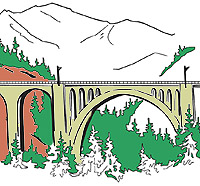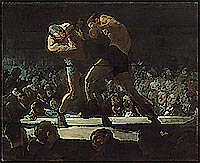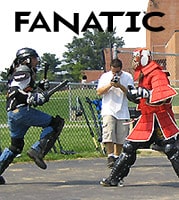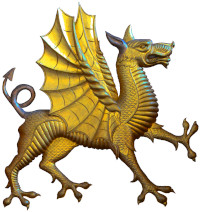Polymachus commented on Phalanx versus Legion Mar-30-2019 7:45 PM UTC
Thank you. Two questions:
1. In what kind of historical period is there a shortage of heavy infantry but not a shortage of cavalry?
2. Why does land ownership or its promise make men fight better than gold or its promise?
The ideal premodern military had good infantry and cavalry. Putting that together essentially involved having a kingdom or an empire, not a republic or a democracy or oligarchy.
The latter types in which nearly pure infantry forces so potent that they could prevail over unbalanced combined arms forces [generally facing good cavalry and poor infantry] were embodied in:
The Greek Hoplite Phallanx
The Roman Legion, which evolved out of a hoplite phalanx
The Swiss Pikeman Phalanx
The English Yeoman Archer
These are very small examples that punched way over their weight. Any military that could take good cavalry and pair it with these was dominant, which is what the Macedonian, Phillip did. The Romans, due to their strong population base and the promise of land to men who served 20 years could keep rebuilding shattered armies, armies that were usually idiot proof and second to none in siege warfare.
There are tribal, barbaric societies a plenty who field formidable infantry [Vikings, Iroquois, Zulus] or formidable horseman [Huns, Mongols, Comanche] but never both so these are one dimensional forces like that of the democratic and republican and yeoman infantry noted above. The English yeoman was a small farmer, the progenitor of the American Rifleman who did so much around the world in later times.
Most ancient armies had good cavalry and poor to mediocre infantry. The Assyrians actually had good infantry and the first cavalry it seems. Egyptian infantry was terrible. The one time Alexander’s Macedonians got a bloody nose was fighting an Indian army with good cavalry, elephants and mediocre infantry. Just having infantry which would not melt on contact was a tall order for most traditional ancient empires, which is the dynamic that permitted the Greeks to shine. Medieval armies usually had good cavalry and terrible infantry, which permitted the Swiss pikeman and English Longbowman to upset the feudal order on the battlefield. The best example of an even fight between strong infantry and strong cavalry was the Battle of Hastings in 1066, which the Norman horseman very nearly lost. In 1336 [I think, no internet] this was reversed with the slaughter of French knights by dismounted English knights and longbowmen at Grecy.
In the end, land is gold and gold buys land, so the reward on the face is the same, whether it is the Legionnaire suffering in the Gallic wars so he can have a farm and a family in middle age or the Macedonian foot companion marching to the ends of the earth for a prize that will make him as rich as the kings of old in his homeland, where he would like to return to and retire. Alexander’s tension with his troops was all about this, taking them farther in search of gold and glory from their beloved homes.
In the end, a soldier with land which he occupies under the rule of a nation, will be more loyal to that nation than one who is simply paid to fight. However, in combat, there is no decided difference between the two, with both types of soldiers, mercenaries and national conscripts being most strongly motivated in the thick of battle by Brotherhood and leadership. Nothing is stronger than the bond men form in combat, facing death together. That just gets you grit, and helps your men hold in adversity and advance with confidence in the man to their left and right and is as likely to be had by a mercenary or a conscript, free agent and slave. However, the inspiration of being led by a man who never loses provides much of the offensive spark. When a man like Nathan Bedford Forest has 34 horses shot dead from under him, the rational mind regards him as blessed by War.
Where the mercenary force—which Alexander’s conscript army became as he made deals with them to travel farther from their nation, essentially to Mars to fight Martians so he could become a god—wavers is after heavy losses, not during the battle. It is no accident that Alexander’s men mutinied after their first close victory in which they took significant casualties at the Hydapses against Porus. The conscripts are more likely to cut and run in combat.
The conscript is more likely to be replaced by another or to rejoin the colors because his rulers hold his family hostage, his mother, father, wife, children at the mercy of a victorious enemy. His wife will be raped, his children sold and his father butchered if the enemy army takes his homeland. This was the problem Phyrrus faced, when, after defeating three Roman armies with his professional force he said, “Another such victor will ruin me.” Meanwhile the Romans were raising another big, mediocre army and top-flight mercs were going to think twice about serving under Phyrrus against such an implacable foe when they could be body-guarding some Eastern Prince or chasing tribesman for Antiochus.
So on who fights hardest it goes like so:
-The soldier with the tightest unit bond to his fellows
-The soldier with the most faith in his leader
-The soldier whose family is held hostage by a state system, which was the main motivation for modern conscript troops, the best of whom, the German Soldier of WWI and WWII knew that if the enemy ever got on German soil that their women would all be raped and their nation broken apart or erased.
You see, the question of good infantry, took us right to the motivation of the soldier, because of the stakes those especially good infantry had, the Swiss fighting in local battalions, the Greeks fighting in local battalions, the Romans fighting under a warrior tribe or cohort with its own symbol, the eagle and the Yeoman fighting as a condition for owning property usually reserved for the nobility and the chance for loot.
All tribal cavalry, unlike tribal infantry, is good.
The only tribal infantry that is generally good are barbarians.
The good heavy cavalry, that can actually smash into good infantry and run over lesser infantry, tend to develop under a feudal system and there were feudal aspects to the Persian Empire of Early [Archimedian] and Late [Sassanid] Antiquity, the Parthians who left Crassus’ legions in the dust and Alexander’s horse companions, who, by their name, can be seen as in a nominal way, brothers to their king. Pure republics and democracies never raised good cavalry. The only good horseman in Greece were the Thessalonians, who were the feudal lords of the grassy north. In early modern armies you could get good infantry through discipline and good horsemen by recruiting from the politically disenfranchised aristocracy. In a tribal nomad grasslands society every man will have 1-100 horses. But in the settled agrarian society only the landed rich will have horses and usually not many. The typical Mongol or Hun had 5-8 horses on a string. A medieval knight, Greek hippie, or Roman equite would only have a riding horse and a battle horse.
Rome, remarkably built an empire on infantry, losing one in three battles, a very rare luxury for warrior kings, who generally do not survive a loss. Eventually they developed into a cavalry-strong force as they lost the “yeoman” farmer base of the economy and recruited barbarians more, with the eastern Roman Empire developing perhaps the best horseman in pre-gunpowder warfare, the cataphract, an armored lancer who also used missile weapons from his saddle against troops too tough to close with. Elements of the Roman infantry system were retained as support and line infantry, with one Legion actually being in continuous existence for about 1000 years.
Ask any modern soldier and they will tell you that the foot soldier needs a support vehicle and that the fighting vehicle needs foot soldiers, which makes it all the more awesome that for some periods of history, an infantry force or a cavalry force would be able to take the field without supporting troops of the other kind and win. The most impressive case for horsemen was in the early-mid 1200s when Subai took 20,000 Mongols in a recon mission from Iran through the Ukraine and Russian and into Europe, wiping out numerous national, feudal and tribal armies just to have a look see. When he came back with a real army, it wouldn’t be pretty. The most impressive case of infantry surviving alone against all odds and types was the Anabasis [journey down to the sea] of Xenophon and his 10,000 right around 400 B.C.
Note, that the definition of a heavy infantryman was in antiquity, one armed with a large shield. These were not necessarily the infantry that hit the hardest but were those who could hold under the most pressure and most importantly stand before a horse charge. Small shield infantry will be discussed in a separate section, and in general consisted of barbarian allies or mercenaries with ethnically distinct weapons.
Man Gearing
,204,203,200_QL40_&dpSrc=srch











I recently watched a documentary,”Combat Obscura”,showing Marines in Afghanistan,smoking weed mostly and occasionaly getting in fire fights.I was struck by how they would mostly huddle behind mud walls or buildings and made no attempt to do anything other than make pot shots back toward the insurgents,Exactly like Army infantry unit i served in in Iraq,only the Marines are supposed to be elite infantry as compared to the garden variety army version.
The Marines main tactic,just like Army infantry is to call in air strikes or artillery.
A modern Army or Marine infantryman really only needs a 3 by 5 card with instructions on calling for fire and a radio,that’s the primary tactic.
Thank you, Sir, and nice to have you home rather than over where.